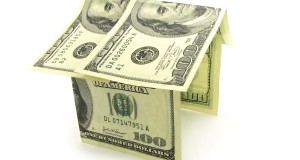Every season, an incredible number of house owners deal with property or home taxes. In most situations, when the tax bill comes, if it seems affordable, most people would pay it and move on with their lives. That being said, to create sure that you are not being overcharged on property or home taxes, it’s essential to comprehend how they are established and how property or ideals are established.
Determining Property Taxes
The property or home taxes that are being gathered by the states and the federal authorities serve as major earnings. In most cases, these taxes come in the form of an amount, where many different local authorities, boards and legislatures will choose the appropriate quantity of tax revenue that needs to be raised. They will have a hearing on the budget to choose the money that will be needed so that the government can cover its expenses with no financial difficulties in the season ahead. The solutions that are normally financed by property or home taxes include: education, emergency solutions, transport, collections and leisurely areas as well as different activities.
Calculating Property Taxes
The way that property or home taxes are established would be through the use of the mill levy and the assessed property or home value.
Mill Levy or Millage Tax
The work impose is basically the tax amount assessed on your property or home value, with one work comprising one 10th of one cent. So, for $1,000 of evaluated property or home value, one work would be just like one dollar. Tax prices for each tax legislation in an position are established independently and then all the prices are added together to figure out the complete work amount for an entire position. Generally, the town, nation and institution section each have the power to impose against the qualities in their limitations. So each enterprise would determine its required work imposes and it would all be counted up to equivalent the complete work imposes.
As an example of a work impose computation, assume the complete evaluated property or home value in a nation is $100,000,000, and the nation chooses they need $1,000,000 in tax earnings to run the nation. The work impose would basically be $1,000,000 separated by $100,000,000, and implies 1%. Now assume the town and institution section established a work impose of 0.5% and 3% respectively. The complete work imposes for the position would be 4.5% (1+0.5+3) or 45 generators.
Assessed Value of Property
Property taxes are established by getting the work impose, like we’ve established in the previous example, and growing it by the evaluated value of your property or home. The evaluated value is a annually assessment performed to choose the affordable industry value for your home-based upon existing local housing industry circumstances.
The assessor will review all relevant details around your property or home to create and calculate the overall value. To provide you with the most precise assessment, the assessor must look at what identical qualities are selling for under the industry circumstances, how much the replacement expenditures for the property or home would be, the maintenance expenditures for the homeowner, if any upgrades were completed, the quantity of earnings you are making from the property or home, and the monthly interest energized to purchase or build your property or home similar to yours.
After the assessor has this detail, there are three ways that your property or home will be valued:
1. Performing a revenue assessment. The assessor will value your property or home-based identical revenue which has taken in the position. As this technique is being used you should look at overpricing, under costs, the location of the property or home and the overall state of property.
2. The price technique. This is when the assessor chooses your property or home value according to how much it would price to substitute your property or home. If property or home is not new, assessors figure out the quantity of devaluation that has taken position and how much the property or home would be worth if it was clear.
3. The earnings technique. This technique is according to how much earnings you would create from the property or home if it were rental. Using this technique, the assessor must be sure to consider factors such as: expenditures for maintaining the property, price to manage the home, insurance, taxes and the return that you could reasonably anticipate from the home.
After identifying industry value for the property, the evaluated value will be established by getting the actual value of the property or home and growing it by an assessment amount. The assessment amount is a consistent amount and ranges by tax legislation, and could be any amount below 100%. After getting the evaluated value, it is increased by the work impose to figure out your taxes due.
For example, assume the assessor chooses your property value is $500,000 and the assessment amount is 8%. The evaluated value would be $40,000. Now getting the work impose of 4.5% we established previously, the tax due would be $1,800 ($40,000 x 4.5%).
Conclusion
Property taxes can be very complicated for many house owners. To ensure that you are paying the right quantity in property or home tax, you must comprehend how the property or home is respected and how the required taxes are calculated.



